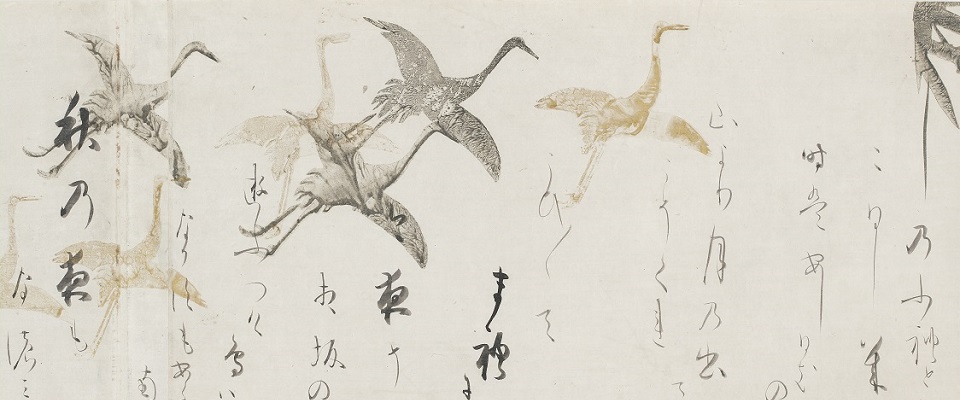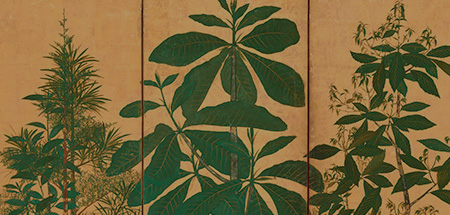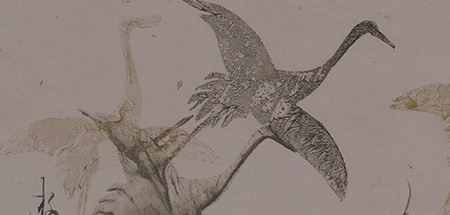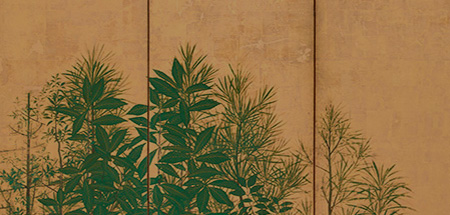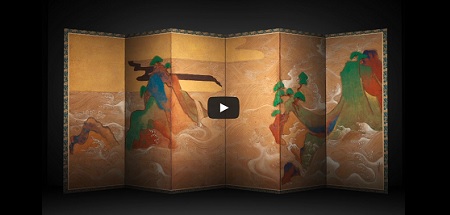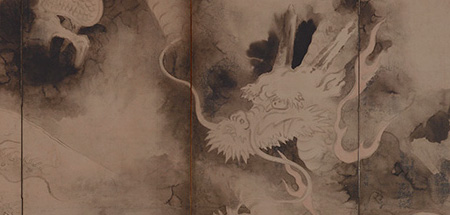Sōtatsu's Times: Perspectives on the Culture and Politics of Kyoto
Freer, Meyer Auditorium
Saturday, December 5, 10 am-5 pm
Speaker Bios
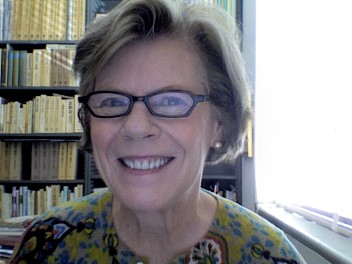 Mary Elizabeth Berry is Class of 1944 Professor of History at the University of California, Berkeley. Her publications include Hideyoshi (Harvard University Press, 1982), The Culture of Civil War in Kyoto (University of California Press, 1994), and Japan in Print: Information and Nation in the Early Modern Period (California, 2006). She is now working on a book that tries to answer the following question: How did Japan make the revolutionary leap from a manorial economy to a market economy in the seventeenth century? She has served as president of the Association for Asian Studies and is a member of the American Academy of Arts and Sciences.
Mary Elizabeth Berry is Class of 1944 Professor of History at the University of California, Berkeley. Her publications include Hideyoshi (Harvard University Press, 1982), The Culture of Civil War in Kyoto (University of California Press, 1994), and Japan in Print: Information and Nation in the Early Modern Period (California, 2006). She is now working on a book that tries to answer the following question: How did Japan make the revolutionary leap from a manorial economy to a market economy in the seventeenth century? She has served as president of the Association for Asian Studies and is a member of the American Academy of Arts and Sciences.
 Morgan Pitelka is the director of the Carolina Asia Center and an associate professor in the Department of Asian Studies at the University of North Carolina at Chapel Hill, where he teaches premodern Japanese history. His research focuses on the history of the samurai, tea culture, and ceramics, and the methodology of material culture studies. His publications include Spectacular Accumulation: Material Culture, Tokugawa Ieyasu, and Samurai Sociability (Hawaii, 2016); What’s the Use of Art? Asian Visual and Material Culture in Context, co-editor with Jan Mrazek (Hawaii, 2007); Handmade Culture: Raku Potters, Patrons, and Tea Practitioners in Japan (Hawaii, 2005); and Japanese Tea Culture: Art, History, and Practice (Routledge, 2003).
Morgan Pitelka is the director of the Carolina Asia Center and an associate professor in the Department of Asian Studies at the University of North Carolina at Chapel Hill, where he teaches premodern Japanese history. His research focuses on the history of the samurai, tea culture, and ceramics, and the methodology of material culture studies. His publications include Spectacular Accumulation: Material Culture, Tokugawa Ieyasu, and Samurai Sociability (Hawaii, 2016); What’s the Use of Art? Asian Visual and Material Culture in Context, co-editor with Jan Mrazek (Hawaii, 2007); Handmade Culture: Raku Potters, Patrons, and Tea Practitioners in Japan (Hawaii, 2005); and Japanese Tea Culture: Art, History, and Practice (Routledge, 2003).
 Jacqueline I. Stone is a professor in the Religion Department at Princeton University, where she teaches Buddhism and Japanese religions. She received her PhD from the Department of East Asian Languages and Cultures at the University of California, Los Angeles. Her major research area is premodern Japanese Buddhism. She has worked extensively on the Japanese reception of the Lotus Sūtra and the Tendai and Nichiren Buddhist traditions. Her books and co-edited volumes include Original Enlightenment and the Transformation of Medieval Japanese Buddhism (University of Hawai’i Press 1999) and Readings of the Lotus Sūtra (co-edited with Stephen Teiser, Columbia University Press 2009).
Jacqueline I. Stone is a professor in the Religion Department at Princeton University, where she teaches Buddhism and Japanese religions. She received her PhD from the Department of East Asian Languages and Cultures at the University of California, Los Angeles. Her major research area is premodern Japanese Buddhism. She has worked extensively on the Japanese reception of the Lotus Sūtra and the Tendai and Nichiren Buddhist traditions. Her books and co-edited volumes include Original Enlightenment and the Transformation of Medieval Japanese Buddhism (University of Hawai’i Press 1999) and Readings of the Lotus Sūtra (co-edited with Stephen Teiser, Columbia University Press 2009).
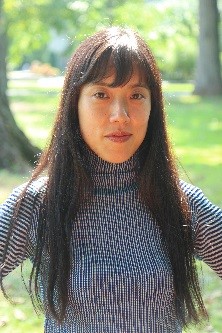 Tomoko Sakomura is associate professor of art history at Swarthmore College. She holds a PhD in art history and archaeology from Columbia University. Sakomura is a specialist in Japanese art history whose work examines the relationship between word and image in the visual culture of late medieval Japan. Her forthcoming book Poetry as Image: The Visual Culture of Waka in Sixteenth-Century Japan (Brill 2015) examines the ways the visual culture of classical Japanese poetry (waka) engaged with practice and protocol developed over the previous six centuries, and what these engagements reveal about the role of the past in cultural productions of the present.
Tomoko Sakomura is associate professor of art history at Swarthmore College. She holds a PhD in art history and archaeology from Columbia University. Sakomura is a specialist in Japanese art history whose work examines the relationship between word and image in the visual culture of late medieval Japan. Her forthcoming book Poetry as Image: The Visual Culture of Waka in Sixteenth-Century Japan (Brill 2015) examines the ways the visual culture of classical Japanese poetry (waka) engaged with practice and protocol developed over the previous six centuries, and what these engagements reveal about the role of the past in cultural productions of the present.
 Joshua S. Mostow is professor of Asian studies at the University of British Columbia, Vancouver, Canada. He received his doctorate in the comparative literature and literary program of the University of Pennsylvania. He is the author of numerous studies on the interrelations between literary texts and images in premodern Japanese culture. His most recent bsook, Courtly Visions: The Ise Stories and the Politics of Cultural Appropriation (Brill, 2014), traces the reception and use of the tenth-century literary romance into the modern day through an examination of both visual and literary sources. He was recently elected as a fellow of the Royal Society of Canada, the senior Canadian collegium of distinguished scholars, artists, and scientists.
Joshua S. Mostow is professor of Asian studies at the University of British Columbia, Vancouver, Canada. He received his doctorate in the comparative literature and literary program of the University of Pennsylvania. He is the author of numerous studies on the interrelations between literary texts and images in premodern Japanese culture. His most recent bsook, Courtly Visions: The Ise Stories and the Politics of Cultural Appropriation (Brill, 2014), traces the reception and use of the tenth-century literary romance into the modern day through an examination of both visual and literary sources. He was recently elected as a fellow of the Royal Society of Canada, the senior Canadian collegium of distinguished scholars, artists, and scientists.
Sōtatsu's Times
Explore
Galleries »
Flowers and Grasses of the Four Seasons
Right Screen »
Left Screen »
Timeline »
Rotation Schedule »

